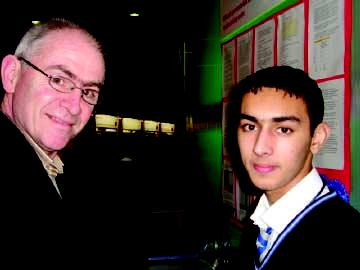| 2006 |

|
YEAR BOOK |
Synge Street CBS, Dublin
|
Efficient parameterisation of the binomial option-pricing model
|

The Black-Scholes option-pricing formula (1973) stimulated a rapid expansion of options markets. The binomial option pricing model (1979) allows the pricing of American options on dividend-paying stocks.
Yet, in spite of the success of these and other models, research on option-pricing models continues because all current models have defects, for example, failure to deal with volatility smiles, transaction costs and illiquid markets.
The binomial option-pricing model requires the specification of two parameters u and d that describe the upward and downward movement of the stock price at each point of the tree. But how do we choose realistic values of these parameters? The usual choice ensures that, in the limit of many time steps, the option price obtained from the binomial option-pricing model approaches that obtained from the Black-Scholes model. But this choice effectively ties the binomial option-pricing model to the Black-Scholes assumption of geometrical Brownian motion, an assumption that has come to be regarded with some suspicion.
My project describes algorithms that allow the parameters of the binomial option-pricing model to be inferred from the observed market prices of actively traded options, thereby dispensing with the assumption that the price process of the underlying is geometric Brownian motion. The algorithms also yield a value for the continuous dividend yield of the underlying.
Previous research that attempted to extract model parameters from observed prices in the options markets focused almost exclusively on European options. The algorithms presented in this project work equally well with both European and American options.
The algorithms were tested using the S&P 100 index option, which is an American option, and the S&P 500 index option, which is a European option.
The algorithms �
� allow pricing of calls and puts,
� make accurate predictions of bid and ask prices,
� allow a trader to assess the profitability of various option trading strategies.The strengths of the algorithms are �
� they make no theoretical assumptions about the price process of the underlying,
� they exploit the simplicity of the binomial option-pricing model,
� they retain the no-arbitrage and replicating portfolio basis of the binomial option-pricing model except that they allow the market to decide the values of the model parameters,
� they work equally well with both European and American options.
Gohar entered his project in the Senior Individual Section in the Chemical, Physical & Mathematical Sciences Category at the BT Young Scientist & Technology Exhibition in January 2006 and won the Runner-up Individual Award . His teacher was Jim Cooke.
| This article was sponsored by Oldbury Publishing Limited. |
|---|